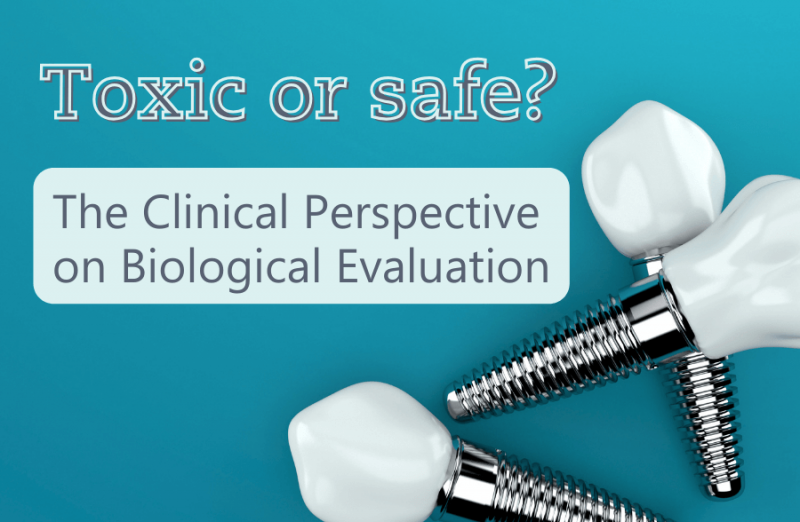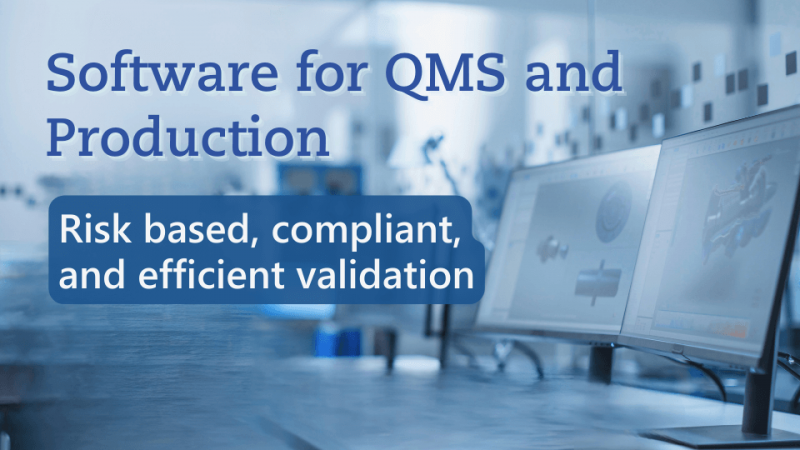Biological Evaluation from the Perspective of Clinical Evaluation According to the MDR
18/12/2023
Do you have any questions about the article or would you like to find out more about our services? We look forward to hearing from you!Make a non-binding enquiry now
The clinical evaluation of a medical device is an essential part of the Technical Documentation, assessing compliance with the General Safety and Performance Requirements outlined in Annex I of the Medical Device Regulation (EU) 2017/745 (MDR) of the European Union. The clinical evaluation must follow a precisely defined and methodologically sound procedure, incorporating a critical analysis of all available clinical and non-clinical data.ISO 10993-1 (currently EN ISO 10993-1:2020 ) stipulates that physical and/or chemical information is required for a risk assessment. The contact tissue and the duration of contact decide which endpoints need to be considered according to Table A.1 of the annex to demonstrate biological safety.This information is crucial for the risk-based approach, determining the evaluation route and the required level of clinical evidence. In this context, interfaces with risk management according to ISO 14971 (currently EN ISO 14971:2019+A11:2021 ) should also be considered.Thus, all necessary information regarding contact materials can be incorporated from the biological evaluation plan, which is also to be created.After clearly identifying and describing the products under evaluation, the clinical evaluation plan includes the section where the evaluation itself is planned. According to General Safety and Performance Requirement 8 from Annex I of the MDR, a positive benefit-risk ratio must be demonstrated by weighing all known and foreseeable risks or side effects against the clinical benefits intended within the intended purpose. ISO 10993-1 , information on possible cell toxicity, irritation and sensitization potential, systemic and chronic toxicity, as well as the safety of substances or particles released during clinical application. Considering and evaluating the relevant endpoints form a basis for further considerations regarding potential undesirable bodily reactions in clinical evaluation. This includes addressing potential material-mediated allergic reactions, hypersensitivities, skin irritations, and other associated risks.ISO 10993 , especially when dealing with a heterogeneous product group.The advantage of a correctly created biological evaluation plan lies not only in finding everything necessary in one document but also in clearly outlining, during the creation of this plan, which tests are required and which are the current versions of the applicable standards. Answering these questions individually for each product, when there is a multitude of different test reports, is a significant effort and may exceed the competence of the clinical evaluation creators.MDCG 2020-5 :
Best Regards
Clinical evaluation
The identification and detailed description of the medical devices under evaluation and their clinical application are found at the beginning of each Clinical Evaluation Plan (CEP) and the accompanying Clinical Evaluation Report (CER). These initial sections specify the document's scope concerning the covered products, explaining the composition (structure) and peculiarities of the application of the medical devices under evaluation.Starting point for biological evaluation
According to point 1.1k) in Annex II of the MDR , listing substances that come into direct or indirect contact with the human body is also part of the product description. These, along with the respective tissue type and contact duration and type, are listed in the early chapters of the clinical evaluation plan. This information serves, among other purposes, as the starting point for the biological evaluation strategy, which is defined in the biological evaluation plan.The ingredients of the medical device are cross-referenced with the list of substances of very high concern for authorization under the REACH regulation (SVHC list) and checked for the safety of application for medical purposes during material characterization. Annex A ofBiocompatibility
For all medical devices intended for direct contact with the human body, proof of the biocompatibility of ingredients or used materials is essential. The tests provide, as required by Annex A ofHolistic biological evaluation
From the perspective of clinical evaluation creators, documenting the biological assessment in the form of a biological evaluation plan and its corresponding report for the product group under evaluation is much more manageable than dealing with individual reports according to different parts ofBiological evaluation and equivalence of medical devices
Another part of the clinical evaluation where data from biological evaluation are relevant is the comparison of biological characteristics to demonstrate equivalence between two medical devices. The relevant biological characteristics for equivalence are specified in- Same materials or substances in contact with the same human tissue or body fluids
- Similar type and duration of contact
- Similar release properties of substances, including breakdown products and leachable substances
Conclusion
The interfaces between biological and clinical evaluation are outlined above, highlighting their close interconnection. In practice, it is crucial to complete the biological evaluation before commencing the creation of the clinical evaluation. If this sequence is not followed, it can lead to unnecessary efforts, for example, if the biological evaluation reveals obvious safety gaps in the used substances.Do you need assistance with creating the clinical evaluation or biological evaluation for your medical device? Or are you currently dealing with another complex issue related to Clinical Affairs or Technical Documentation and are in search of experienced professionals? Please feel free to contact us anytime. Together, we will find the best solution for your specific needs.Best Regards
Our blog posts are researched and created with the utmost care, but are only snapshots of the regulations, which are constantly changing. We do not guarantee that older content is still current or meaningful. If you are not sure whether the article you have read on this page still corresponds to the current state of regulation, please contact us: we will quickly place your topic in the current context.



